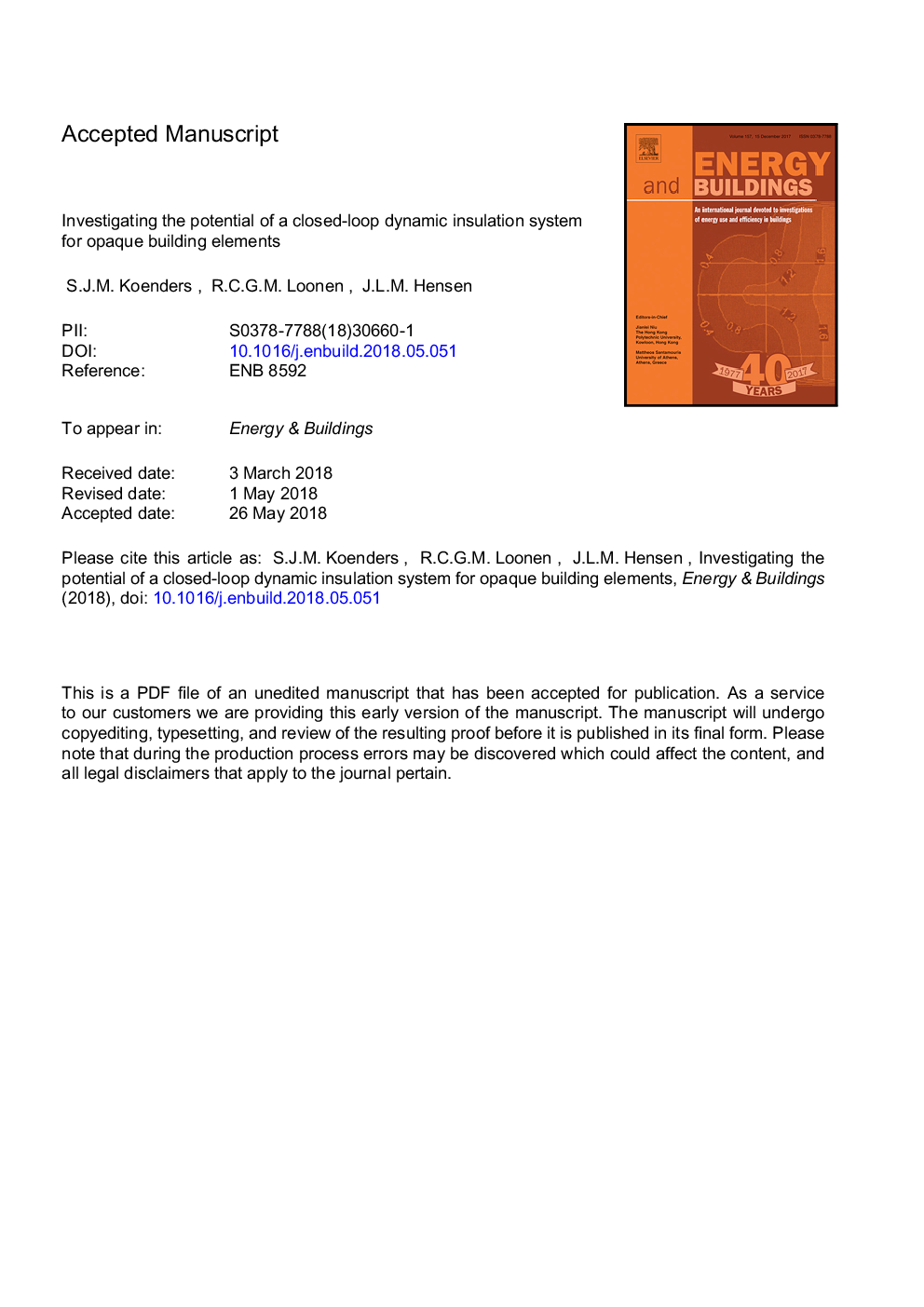| Article ID | Journal | Published Year | Pages | File Type |
|---|---|---|---|---|
| 6727591 | Energy and Buildings | 2018 | 45 Pages |
Abstract
The extensive use of thermal insulation in low-energy dwellings makes them susceptible to heat trapping in warmer periods. Construction elements with dynamically adjustable thermal transmittance properties, so-called dynamic insulation systems, can be a promising solution for reducing this overheating problem, while simultaneously lowering the energy consumption for heating. In this paper, the performance of a novel type of closed-loop forced convective dynamic insulation system is investigated. A simulation model to predict the performance of the dynamic insulation is developed in EnergyPlus. First results show that a ninefold higher U-value can be achieved in comparison with the insulating state of the system. Multiple case studies have been analysed to study the behaviour and performance of the system. It was found that the dynamic insulation system can reduce the energy consumption and increase the indoor thermal comfort of a typical residential building, while using less auxiliary energy than comparable passive cooling systems, such as night ventilation. Applying dynamic insulation to a façade construction with a heavyweight interior partition and lightweight exterior partition resulted in the best performance. If a small period of thermal discomfort is allowed, the closed-loop dynamic insulation system can obviate the need for an active cooling system in the climates of Helsinki, Amsterdam and Stuttgart.
Keywords
Related Topics
Physical Sciences and Engineering
Energy
Renewable Energy, Sustainability and the Environment
Authors
S.J.M. Koenders, R.C.G.M. Loonen, J.L.M. Hensen,
